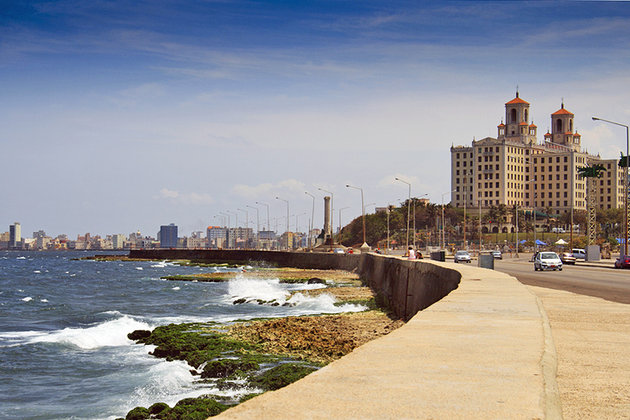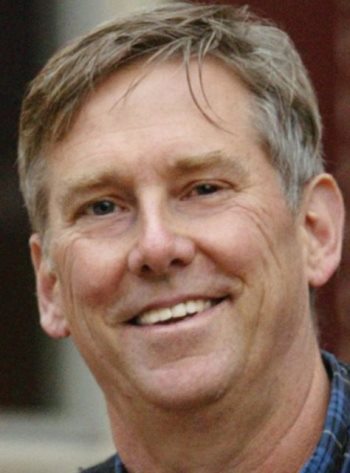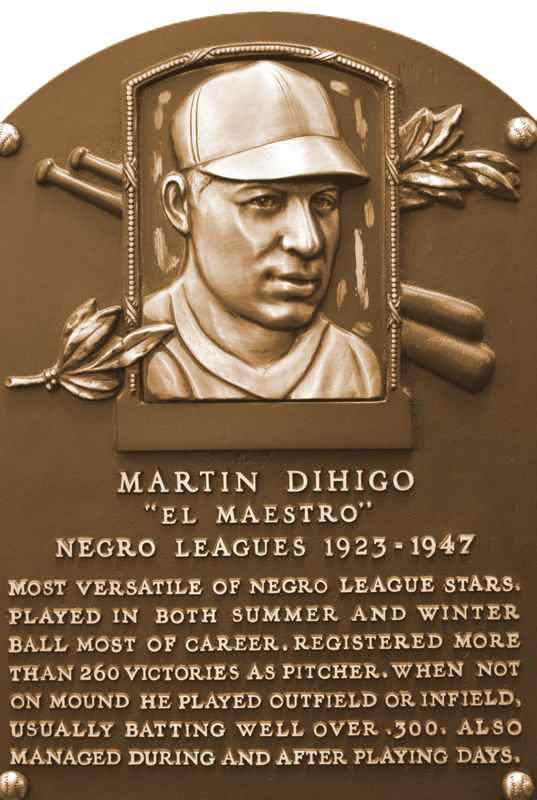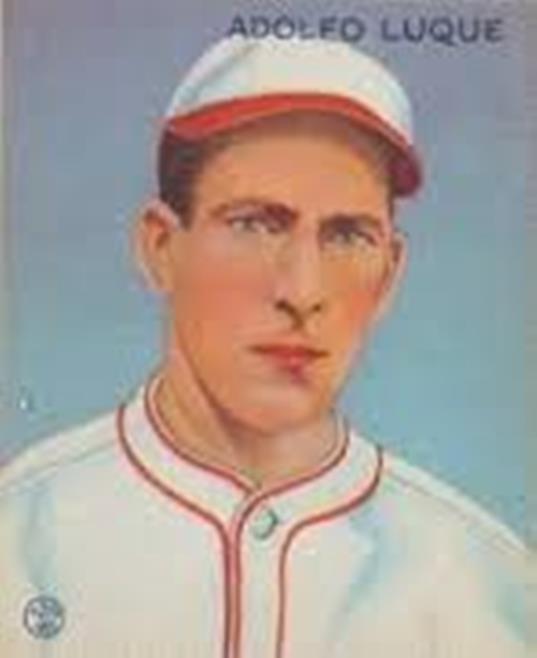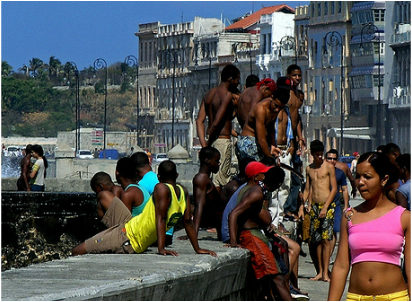|
When I visited Cuba in 1991, people asked, “Vecsey, why doesn’t your government end the blockade and let some business in here?”
I replied, “Sure, el bloqueo is dumb, but think about it: what if American business did come to Cuba …Have you ever heard of a man named Trump?” This was my worst example of a rapacious developer who would put up gaudy, expensive hotels along the waterfront and destroy the feel of the old city. The Cubans nodded no. They were living 30-plus years in the past. Baseball fans were still asking about DiMaggio and Williams and Jackie Robinson. I had to explain to them there was a New York guy named Trump who built casinos and was known for his playboy ways – sounded like the bad old days, when Americans used Cuba for their pleasure. I told them: “He’ll bulldoze the Malecón” --the seaside promenade where young people congregate -- “and put up crappy-looking buildings and all the people living downtown will be back in the sugar fields.” Cubans did not have much in 1991 -- one egg a week, very little meat, and no basic goods like shampoo, which was sold in dollar stores, for tourists. A well-placed friend had a couple of doctors in her family; they brought home used soap from the hospital and she boiled it down for personal use – “like my grandmother used to do,” she said. That was life under Fidel, life under Communism – “The God That Failed,” from the 1949 confessional by six writers. By 1991, if you wanted to talk about the government in Cuba, you lowered your voice and never mentioned Castro’s name. A furtive stroking of an imaginary beard conjured up the image. While we were there for the Pan-American Games, the Soviet Union started to come down. I sat with some new friends in a bar and watched state television. My friends knew that Castro had rejected Gorbachev, the reformer; they shook their heads in fear and disdain. Within days, Russian oil tankers and Russian specialists steamed out of the harbor. In the past two years, the Cuban people have seen a reasonable American President named Obama start to open lines between the two neighbors. Now Fidel is dead -- and thousands are celebrating on Calle Ocho in Miami – and that builder of casinos that I used as the vulgar example of American business will now preside over that giant country just across the water. When we were privileged to visit Cuba in 1991 for the Pan-American Games, a couple of state translators knew our country, its culture, its movies.
Ziomara and Tessie spoke English as well as we did, although they had never left the island. They called Merrell Noden “Robert Redford” not only for his handsome face,I think, but for something good inside him, something they sensed, from Redford’s movies and his persona. It was a compliment to him, maybe even to us. I hung out with Merrell and Alex Wolff from Sports Illus- trated, a couple of Princeton guys. Somebody else griped about the food one day and one of them, can’t remember which, dryly noted that Cubans had one egg a week while we were eating protein every meal. I slowly realized that Merrell’s love of track and field came from his own running ability at Princeton and later at Oxford. He never told me about his high grades, his love of Shakespeare, but he did brag on his wife, the artist, Eva Mantell, whom I got to meet back in New York. I wish I had kept in better contact as they moved from the city to Princeton, to raise their children, Miranda and Sam. I picked up SI the other day and discovered that Merrell, the strapping athlete, had died of cancer at 59. His friend and colleague, Richard O’Brien, delivered the eulogy, reproduced on Jack McCallum’s web site. It is definitely worth getting to know him better. http://www.jackmccallum.net/2015/06/05/a-friend-remembers-a-friend-both-friends-of-mine/#.VYLHTflViko When I was in Cuba in 1991, aging baseball fans asked about the old Cleveland Indians and Chicago White Sox.
How was Bob Feller? How was Al Lopez? They were polishing ancient memories the way they maintained vintage 1950’s cars. They loved the game itself, debated the strategy of their national teams, held on to the history of the old banished professional clubs like Almendares of Havana. This was their national sport, brought there in the 1860’s by Cubans named Guillo who had worked in Mobile, Ala., and nourished by Esteban Bellan who played for Fordham University and the old professional Troy Haymakers. Later, Americans came for the Spanish-American War and played baseball in their leisure time. Baseball is now part of the patrimony. In the inescapable age of the Web and videos, information crackling over the narrow sea between Florida and Cuba, fans know that Yasiel Puig and Aroldis Chapman have made it big in the major leagues. Is there more where they came from? This is the first question people ask of a sports columnist who went to Cuba for the 1991 Pan-American Games and has kept up on it ever since. Perhaps the national baseball treasures would be the most desired product in Cuba (although, as Rachel Maddow pointed out, Cuban-trained ballet dancers are in demand all over the U.S.) The level of potential major-league talent may be very thin. Plus, it’s really not important. What matters is that Cubans have been starved by the block-headed policies of Fidel and the follies of American leaders. Now President Obama is bringing rationality to half a century of mutual apartheid. Cubans have been living in many forms of poverty. I got the feel in 1991, including a trip to the Bay of Pigs. *- I discovered I could buy items like shampoo – shampoo! – in a dollar store to which I had access because of my journalist credential for the Pan-American Games. *- A well-placed Cuban, volunteering as a journalistic resource, admitted to not minding a hot shower in a hotel. *- Our interpreter, who spoke perfect English, had to wait for two straggling buses to get home after a 12-hour day. We had to persuade her to take a cab we provided. My talented new friends were strangers in their own land. Never underestimate the anger in the aging Cuban-Americans, who lost so much. But life goes on. Surely, there are more players like Minnie Miñoso and Tony Pérez in Cuba. But more important, there are people who need nourishment and work and hope. And shampoo. And visas to travel across the narrow sea -- not in a flimsy boat like Orlando Hernandez, El Duque, but in something safe. Baseball is the least of it. |
Categories
All
|
